An Insider’s Guide to Bangkok’s Galleries, Markets, and Bookshops
By Rida BilgramiBangkok: The city summons a set of preconceptions for the first-time traveller. Chaotic, unrelenting, hedonistic. But most cities exist in the gaps between binaries. In my years spent living and wandering in Bangkok, I have grown to appreciate a metropolis that is abundant in life, creativity and industriousness. The impact of mass tourism is indelible but stepping off the conveyor belt of this form of cultural consumption can yield many pleasant surprises.
Walking
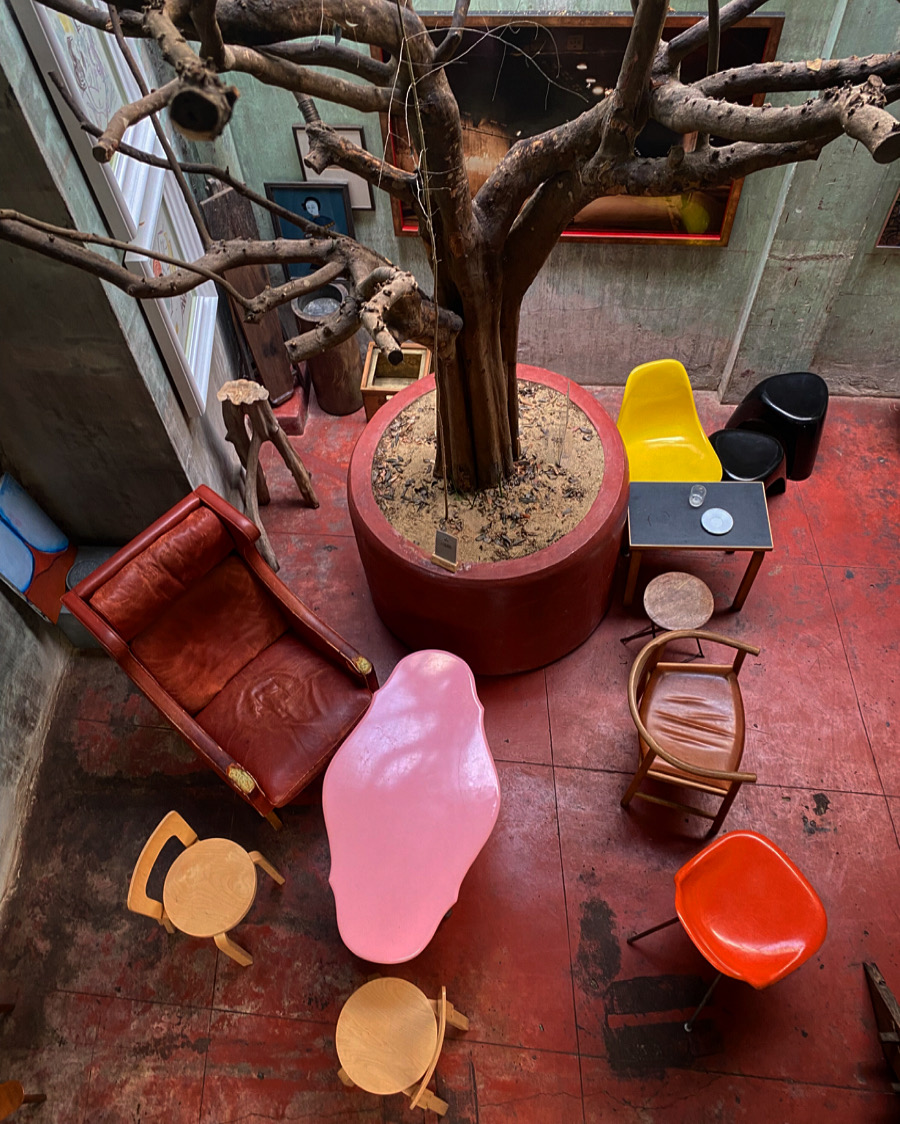
Bangkok is not a pedestrian friendly city by any means but discovering it by foot gives one a sense of the variance of the urban landscape and appreciation for its textures, particularly in the Old Town with its serpentine back streets lined with shrines, antique stores, car workshops, and speakeasies.
Begin a walk from the Grand Post Office building on Charoen Krung Road in Bang Rak district. Built in 1940, one of the few examples of imposing Brutalist architecture in the city, it is now home to the Thailand Creative and Design Center. A few metres along the road is Warehouse 30, an abandoned block of World War II-era warehouses that have been renovated to host an exhibition space, independent boutiques, art galleries, and a coffee shop.
Continue walking along and cross the canal and make a pit stop at Warehouse for a drink on its rooftop, which is not glitzy but very much feels like sitting on a friend’s balcony. Continue walking 15 minutes on Song Wat Road till you reach F V Song Wat, a juice bar that meticulously prepares refreshing drinks from local fruit and vegetables such as tamarind and mangosteen. Set in a converted shophouse, the eclectic interior alone is a huge draw including a traditional Thai wooden house-within-a-house. From Song Wat Road keep walking until the technicolour signboards of Yaorawat Road start to appear. You are now in Chinatown, a world unto itself.
Art
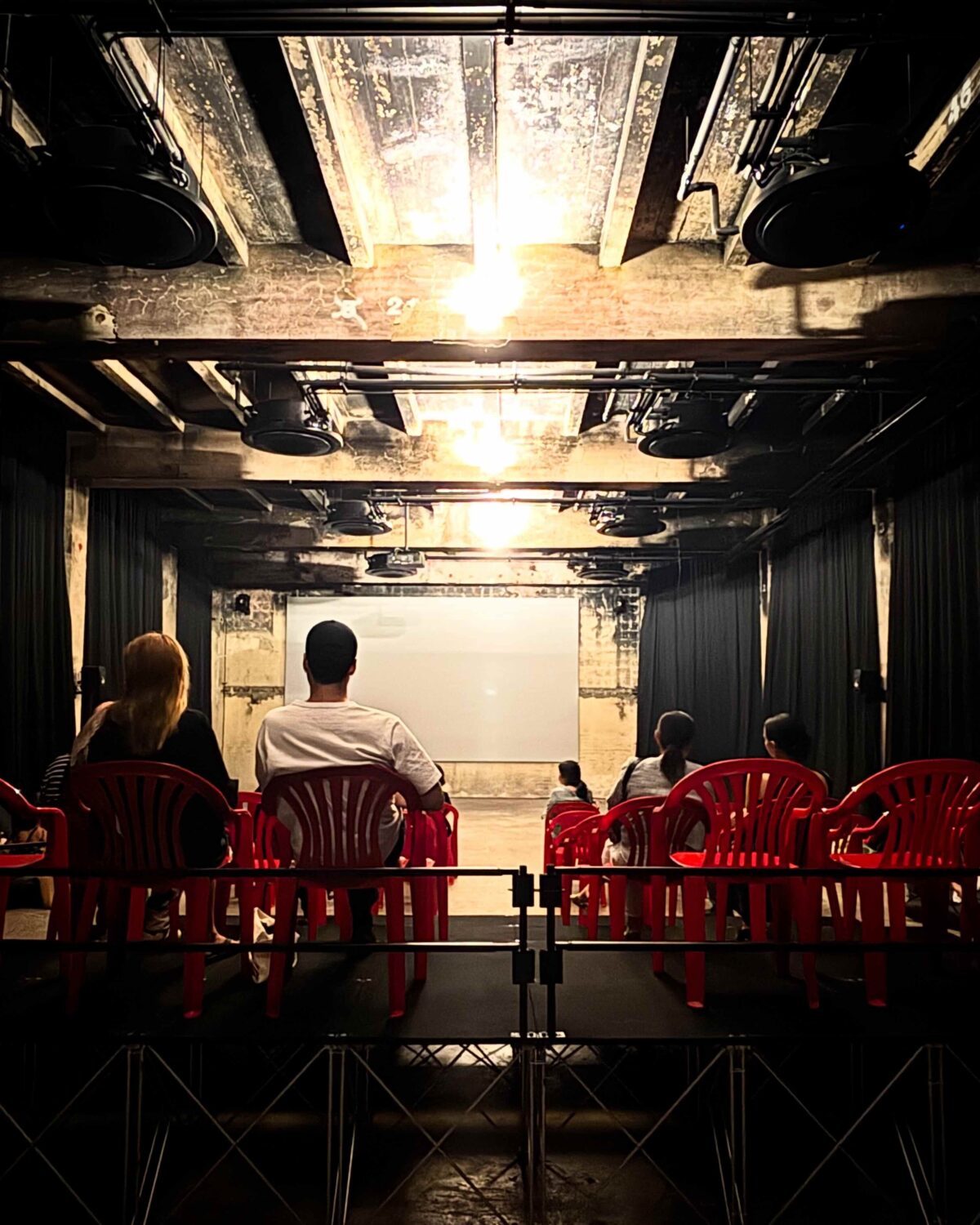
On the fringes of Bangkok’s rapidly gentrifying Chinatown, among noodle vendors and derelict shophouses, is the Bangkok Kunsthalle. Set in an old printing house that had been abandoned after a fire, this contemporary art space opened a year ago and has hosted a series of exhibitions and installations by both Thai and foreign artists with a stated aim of bringing international artists who have never exhibited their work in Thailand before and to showcase Thai artists who are producing work they could not make in other institutions.
I attended a free film screening at the Kuntshalle in December, which was part of the Infringes film program. It had the ambience of an informal community cinema, sitting on plastic chairs inside a massive concrete building in front of a projector screen.
Cinema
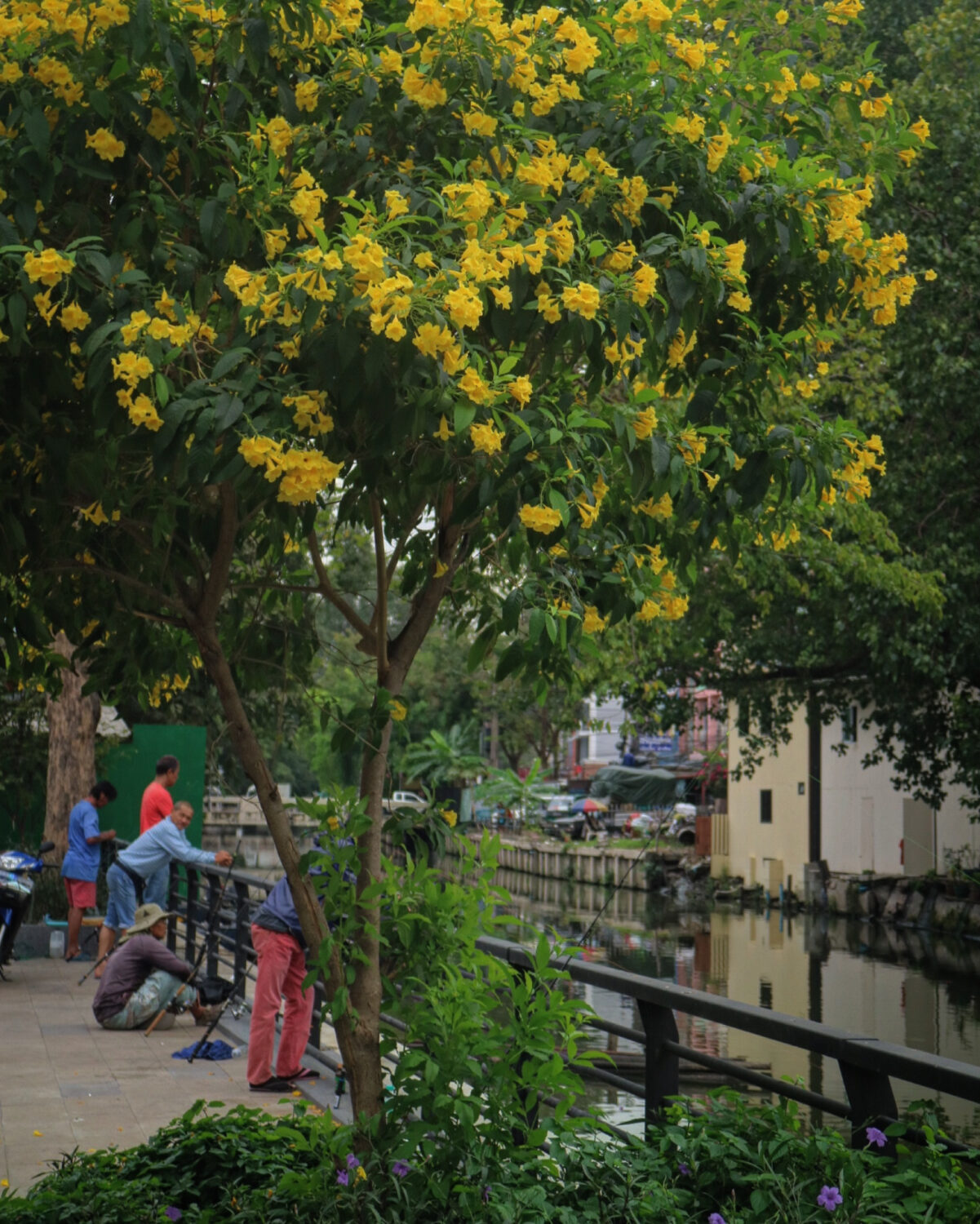
I like to spend time in a local cinema when I visit a city. There is something precious about the communal experience of sitting in the gleaming darkness with a group of strangers, mostly those who inhabit that city, submitting ourselves to images and sound that linger brightly.
There is no dearth of cinemas in Bangkok, but most take the shape of multiplexes found in the myriad luxury malls. The city had a plethora of single screen movie theatres that sprung up post-World War II during the golden years for Thai cinema, but they began dwindling as a result of the industry consolidating under major cineplexes. The pandemic accelerated the shuttering of some of Bangkok’s few remaining independent theatres and they are now few and far between.
The Thai Film Archive, located beside a university campus on the outskirts of Bangkok is worth a half day trip. It houses a museum, a library with an extensive collection and screening room with exhibitions devoted to Thai film history and a reconstruction of one of Bangkok’s first film studios, the long-demolished Sri Krung. The Archive has a regular programme of film screenings from restored classic Thai films to global independent cinema. Closer to the city centre House Samyan is an independent cinema showcasing both contemporary independent films, festival favourites, and restorations. The Krungthep Klang Plang outdoor cinema festival in early January is a wonderful opportunity to catch Thai films across decades and genres in outdoor venues such as Lumpini Park or along the canal.
Coffee
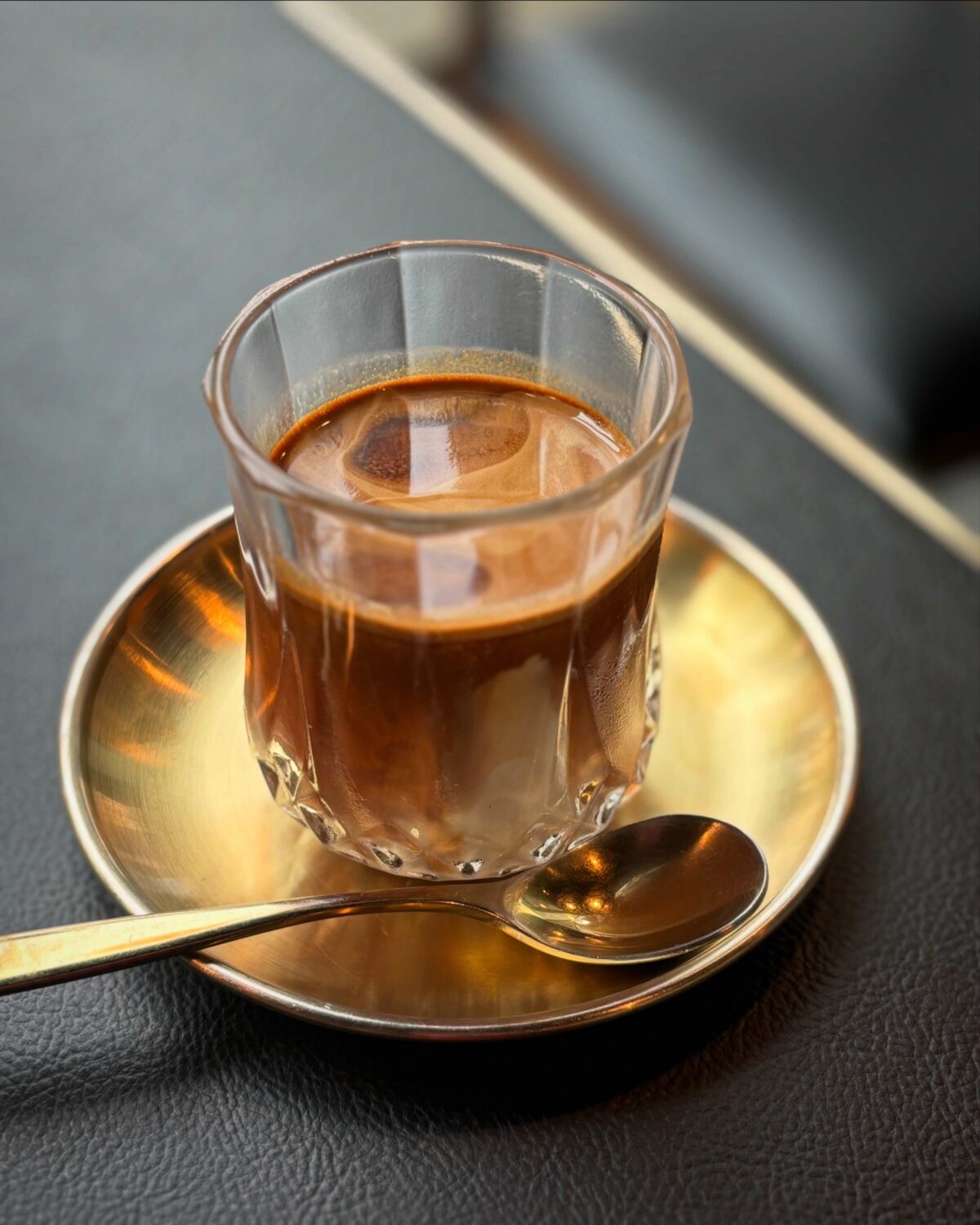
The Northern city of Chiang Mai has long been considered Thailand’s unofficial coffee capital – with many cafes brewing coffee from the northern mountainous region and other producing countries. However, Bangkok is no longer far behind. Whether you are looking for a classic pour over, specialty roasts, third-wave espresso or coffee-based cocktails, you are spoilt for choice.
One of my favourite ways to drink coffee in Bangkok, is to order the Dirty – prepared by pouring freshly brewed espresso over chilled milk. The Dirty originated in Japan but has become quite popular in specialty cafes in Thailand. The hot espresso sits on top of the cold milk, and it slowly permeates through it, creating a marbled appearance, hence the name. Because of the union of hot and cold textures, Dirty has an extraordinary mouthfeel.
For the best Dirty head over to Nana Coffee Roasters in Ari, A Coffee Roaster by Library in Warehouse 30, and Tarns in Sathorn (here also try the refreshing guava juice with the toasted rice notes of genmaicha tea topped with creamy milk foam and a crunchy rice cracker). Or try Mother Roaster, a coffee shop in Talad Noi that specialises in freshly brewed drip coffee made with a wide choice of Thai-grown beans.
Markets
Chatuchak Weekend Market attracts a lot of tourists, but is also frequented by local residents for everything from lamps to artwork to fried chicken and is worth visiting as a landmark Bangkok activity. For a smaller scale market, plan a visit to the Chang Chui (which means “sloppy artisan”) night market in the Thonburi district. The space is a web of 18 buildings, each made from recyclable materials. A decommissioned aeroplane, now an art installation, sits in the middle of a complex that includes a theatre, art spaces, fashion boutiques, restaurants and food trucks as well as a community vegetable garden.
Bookshops and Libraries
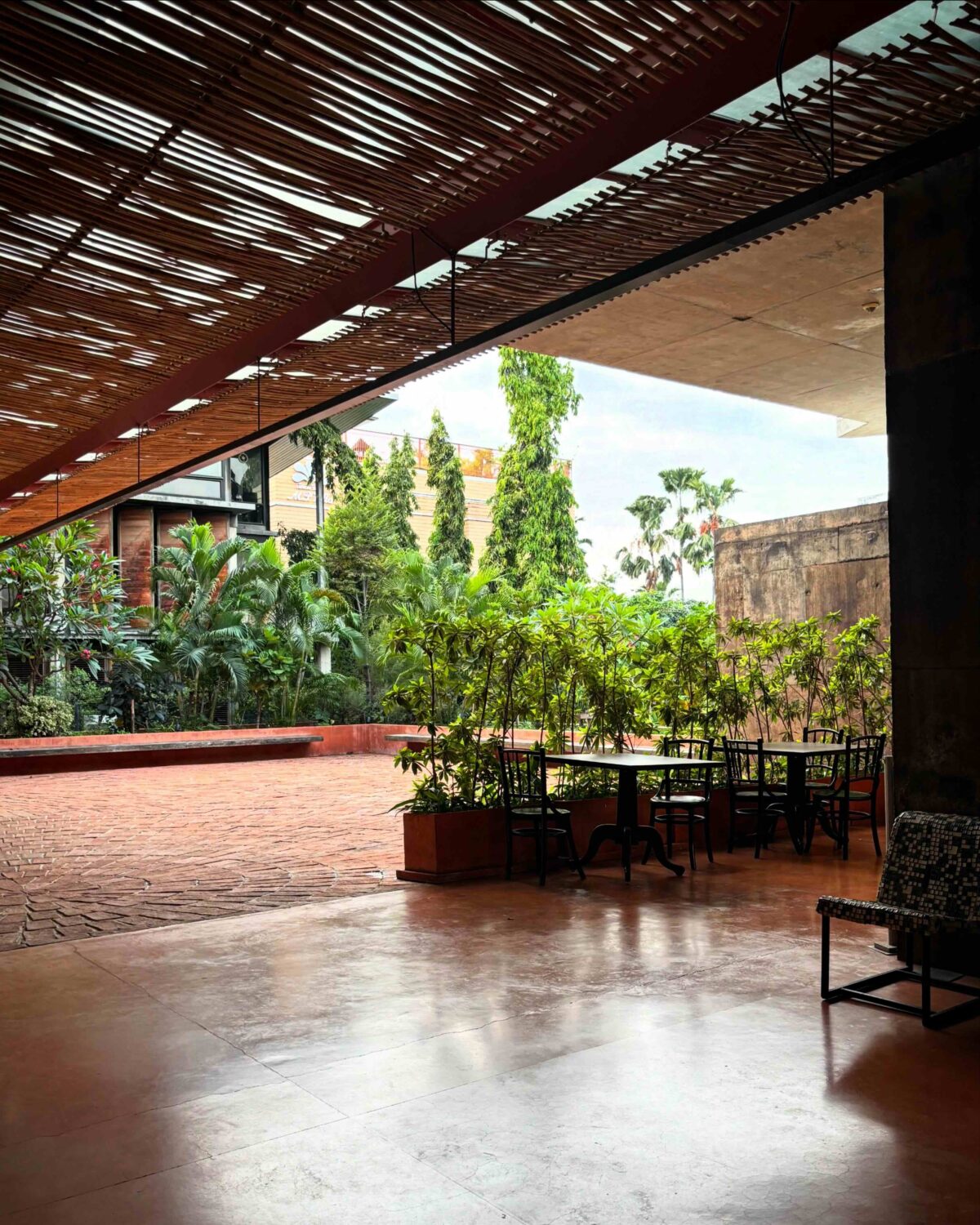
In a city that is increasingly designed for the consumer, a place where the heat doesn’t permit spending daytime in parks I have sought public spaces where long stretches of time can be spent without any exchange of capital. The library at The Jim Thompson Art Center is one such place – it doesn’t require membership (unless you want to borrow books) and it has an impressive collection of English and Thai books on design, art, politics to peruse. Very much a place that embodies the pleasure of just being there.
Bangkok also has delightful bookshops for browsing, lingering and buying books. The Neilson Hays Library is a collection of English language books housed in a neoclassical white antique building. There’s a wide range of novels, magazines, and newspapers. It also has a glass house where you can visit the garden cafe and gallery.
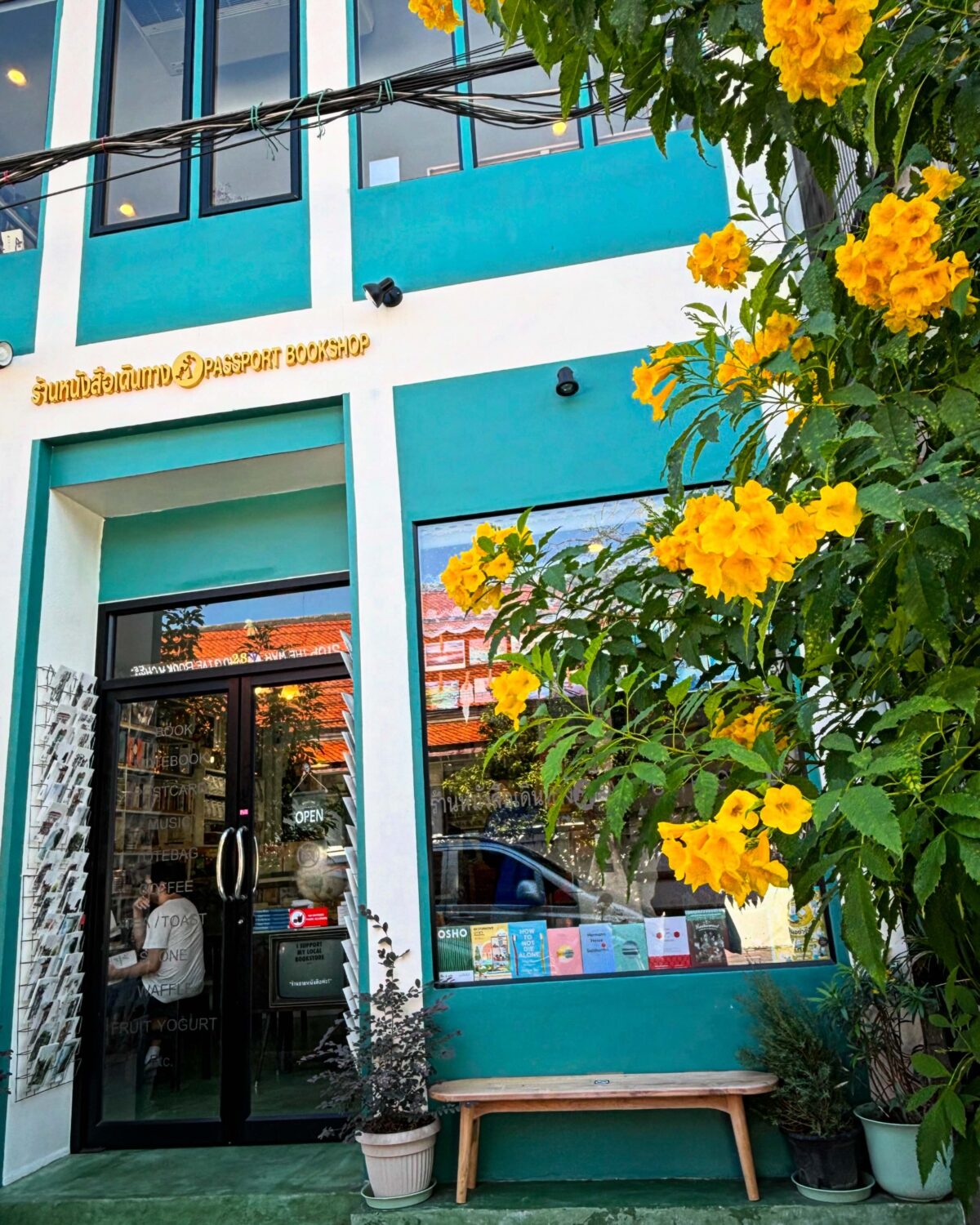
Passport Bookshop is small but with a thoughtful curation of Thai and English books – mostly fiction and travel. The 15-minute walk from the closest MRT stop Sam Yot is a sort of microcosm of the city – you walk past a canal, a park frequented by schoolchildren, a Hindu temple with an attached school, Wat Suthat Thep Wararam, one of the city’s oldest and most revered Buddhist temples and purveyors of temple offerings and artefacts.
Rida Bilgrami is a writer based in London. Her work spans poetry, essays and reported features with a focus on travel, books, visual culture and cities. All photography by Rida Bilgrami.
Header photo: a walk through the Old Town.